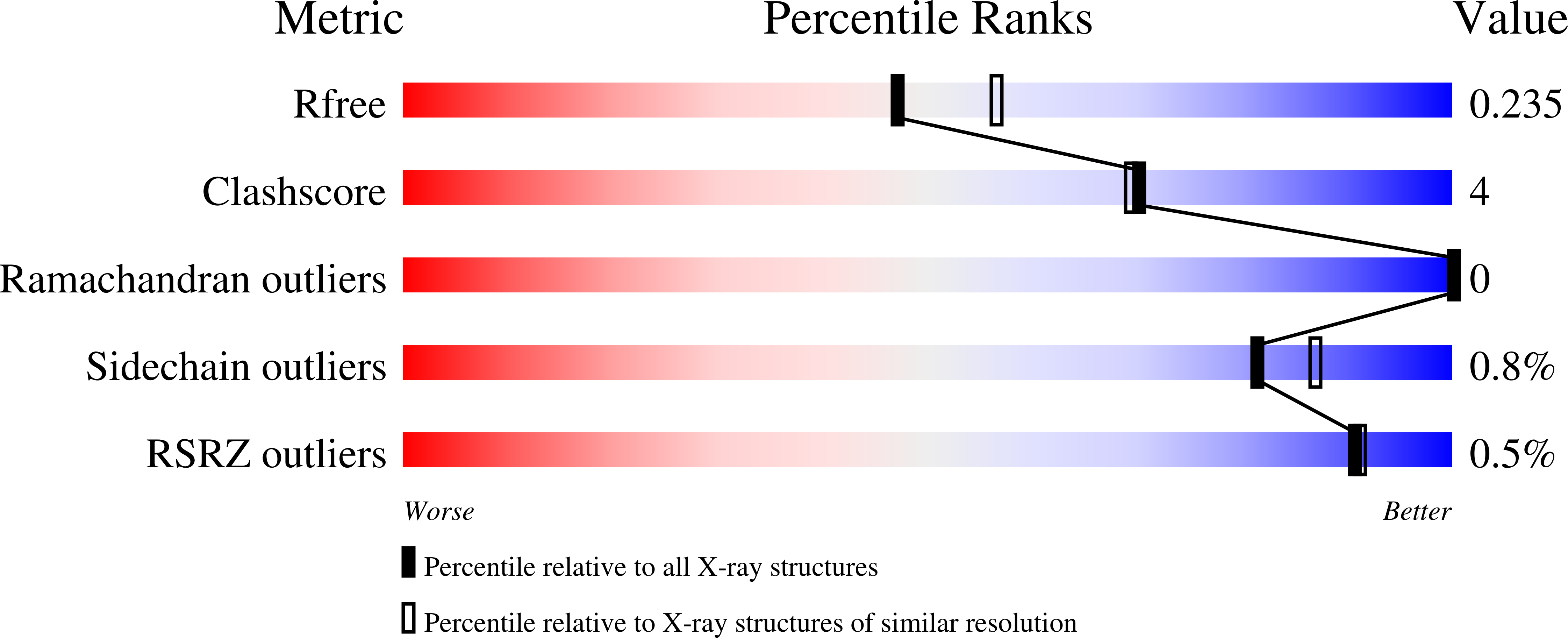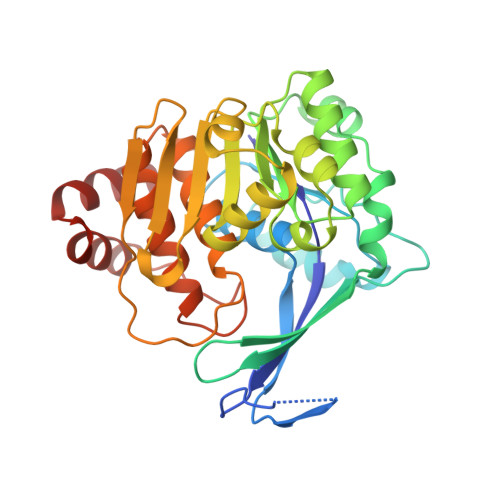Structure-Guided Drug Design of 6-Substituted Adenosine Analogues as Potent Inhibitors of Mycobacterium tuberculosis Adenosine Kinase.
Crespo, R.A., Dang, Q., Zhou, N.E., Guthrie, L.M., Snavely, T.C., Dong, W., Loesch, K.A., Suzuki, T., You, L., Wang, W., O'Malley, T., Parish, T., Olsen, D.B., Sacchettini, J.C.(2019) J Med Chem 62: 4483-4499
- PubMed: 31002508
- DOI: https://doi.org/10.1021/acs.jmedchem.9b00020
- PubMed Abstract:
Mycobacterium tuberculosis adenosine kinase (MtbAdoK) is an essential enzyme of Mtb and forms part of the purine salvage pathway within mycobacteria. Evidence suggests that the purine salvage pathway might play a crucial role in Mtb survival and persistence during its latent phase of infection. In these studies, we adopted a structural approach to the discovery, structure-guided design, and synthesis of a series of adenosine analogues that displayed inhibition constants ranging from 5 to 120 nM against the enzyme. Two of these compounds exhibited low micromolar activity against Mtb with half maximal effective inhibitory concentrations of 1.7 and 4.0 μM. Our selectivity and preliminary pharmacokinetic studies showed that the compounds possess a higher degree of specificity against MtbAdoK when compared with the human counterpart and are well tolerated in rodents, respectively. Finally, crystallographic studies showed the molecular basis of inhibition, potency, and selectivity and revealed the presence of a potentially therapeutically relevant cavity unique to the MtbAdoK homodimer.
Organizational Affiliation:
Department of Biochemistry and Biophysics , Texas A&M University , College Station , Texas 77843 , United States.

















